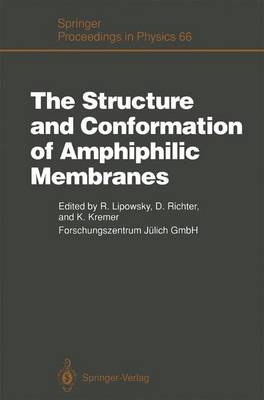Springer Proceedings in Physics
1 primary work
Book 66
The Structure and Conformation of Amphiphilic Membranes
Published 24 July 1992
Membranes composed of amphiphilic molecules are highly flexible surfaces that determine the architecture of biological systems and provide a basic structural element for complex fluids such as microemulsions. Recently, a variety of new experimental methods such as X-ray scattering, neutron scattering, and atomic force microscopy have been used in order to study themolecular structure of these membranes. Their conformational behavior, on the other hand, is studied by optical and electron microscopy, which reveals that membranes in aqueous solution exhibit an amazing variety of different shapes. Several theoretical concepts are described suchas bending elasticity, curvature, and minimal surfaces in order to understand this polymorphism. These concepts are also useful to describe the behavior of membranes in complex fluids where they can build up hexagonal, lamellar, triply-periodic, cubic, and sponge phases. The contributions to this volume provide an up-to-date overview and describe thestate-of-the-art of this rapidly evolving field of research.
